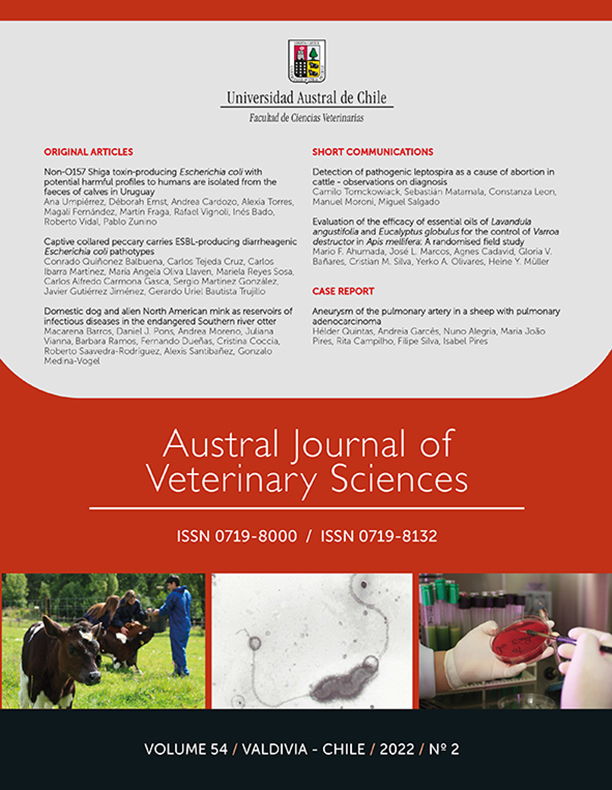Detection of pathogenic leptospira as a cause of abortion in cattle-observations on diagnosis
Contenido principal del artículo
Resumen
Leptospirosis is a zoonotic infectious disease caused by members of the genus Leptospira, which affects domestic and wild animals. Cases of abortion in cattle have been associated with this infection, but these are often not adequately confirmed. To determine the best diagnostic strategy for leptospirosis-associated cases of abortion, we evaluated some of the techniques used in the veterinary laboratory and found that the key issues are sample type and timing. In a retrospective anatomical and histopathological analysis, we studied 42 aborted foetuses with lesions consistent with leptospirosis to check for the presence of pathogenic leptospira by qPCR, as well as ascertaining the serologic status of the cows. In addition, in a prospective analysis, cows that had aborted foetuses were analysed within 2 days of the event by MAT and qPCR using blood and urine samples. Analysis of the foetuses indicated that only 14.3% of the selected cases (6 of 42) gave a positive qPCR result. Regarding cows that had recently aborted foetuses, 4 out of 11 sampled showed a positive qPCR, while MAT tests showed only negative results. The evidence provided in this study indicates that the time that has elapsed since a clinical event has occurred and the type of clinical sample taken are key elements in the successful confirmation of pathogenic leptospira as the cause of abortion.

